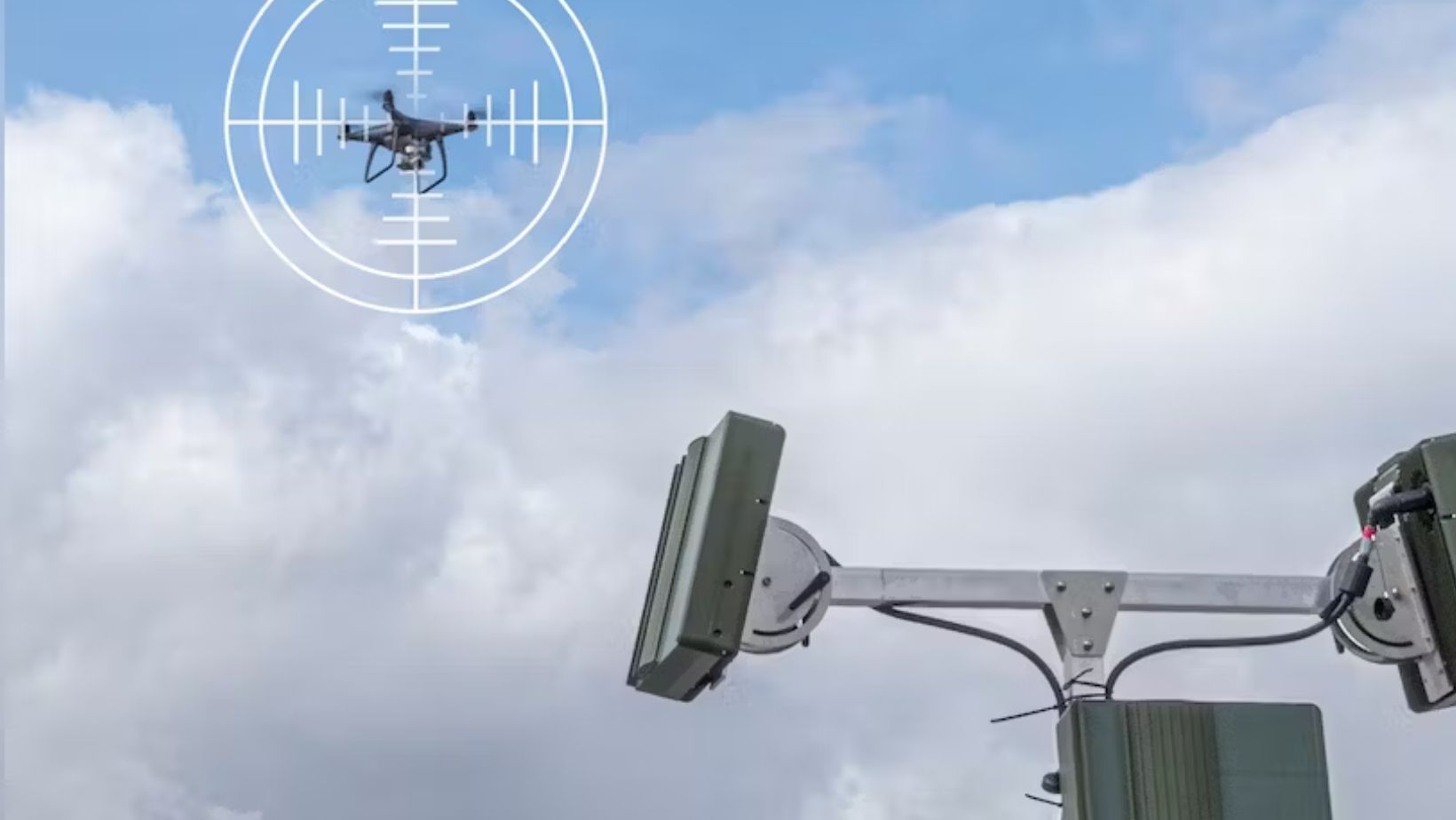Drones, once a novelty, have become ubiquitous, serving purposes ranging from recreational aerial photography to surveillance security as well as serving malicious intent.
This calls for effective anti-drone systems shrouded in a technological mystique that operates on a combination of cutting-edge technologies to detect, track, and neutralize rogue drones safely and efficiently.
But how do these smart technologies work, and how do they shoot down drones? In this article, we will explore how an anti drone system works, shedding light on the technologies and methodologies employed to mitigate drone-related risks. Let’s delve into the intricate workings of these anti-drone marvels!
How Anti-Drone System Work?
For anti-drone systems to work, they combine different technologies that collaborate with one another to shoot down a drone.
Radar
Radar, our vigilant sky guardian, plays a pivotal role in the realm of anti-drone systems. Imagine it as a watchtower sending out invisible signals that bounce off any flying intruder. When a drone enters this radar “signal zone,” it triggers an alert, allowing us to spot potential threats from a considerable distance. Acting as the first line of defense, radar ensures early detection, a crucial step in securing our airspace from unexpected drone activities.
Electro-Optical or Infra-Red Sensors
As daylight fades, EO/IR sensors step into action, resembling superheroes equipped with special goggles. These sensors operate by detecting heat, allowing them to create thermal images even in low-light or complete darkness. By providing continuous surveillance capabilities, EO/IR sensors enhance the effectiveness of anti-drone systems, ensuring drones can be tracked regardless of the lighting conditions.
Radio Frequency Sensors
Drones communicate with their operators through radio frequencies, akin to a secret language. The RF sensors in anti-drone systems act as interpreters, intercepting these signals to understand the drone’s communication. By eavesdropping on these conversations, RF sensors provide crucial information about the drone’s flight path and maneuvers, aiding in comprehensive tracking and threat assessment.
4. High-Tech CountermeasureTactics to Neutralize Drones
Once a drone has been spotted, tracked, and identified as a potential threat, anti-drone systems employ various countermeasures to neutralize the drone. These measures showcase modern defense strategies to disrupt, confuse, or physically capture drones. These countermeasures include:
- RF Jamming: Disrupting Drone Communication
RF jamming takes center stage as a disruptor of the drone’s control signals. Emitting radio frequency interference, this countermeasure disrupts the communication between the drone and its operator, rendering it powerless and compelling a safe landing.
- GPS Spoofing: Navigational Deception in Action
GPS spoofing introduces an element of navigational deception, confusing the drone’s GPS navigation system. This tactic can lead to the drone losing its way or, in more severe cases, crashing. It plays on the reliance of drones on accurate GPS data for navigation.
- Net Launchers: Precision Capture with Giant Nets
Net launchers are the ballet dancers of anti-drone countermeasures, firing nets at drones to entangle and safely bring them down. This non-destructive method ensures the drone is captured without posing a risk to the surrounding environment.
- Laser Weapons: Precision Strikes in Mid-Air
Laser weapons, the shining stars of anti-drone technology, deliver precise strikes by directing focused laser beams at the target. With remarkable accuracy, laser weapons ensure a swift and effective response to airborne threats, destroying drones in mid-air.
The choice of countermeasure depends on factors such as the level of threat, the environment, and the regulations governing the use of force against drones in a particular jurisdiction.
Conclusion
Anti-drone systems employ a range of technologies and methodologies to spot and neutralize unauthorized drones. Through the use of scanners, sensors, and cameras, drones can be detected within protected airspace.
Advanced algorithms enable real-time tracking and identification of drones, allowing operators to respond effectively. Furthermore, countermeasures such as jamming, spoofing, or kinetic methods neutralize the threat posed by unauthorized drone flights. By understanding the workings of these systems, we can better appreciate their role in safeguarding airspace and mitigating drone-related risks.
